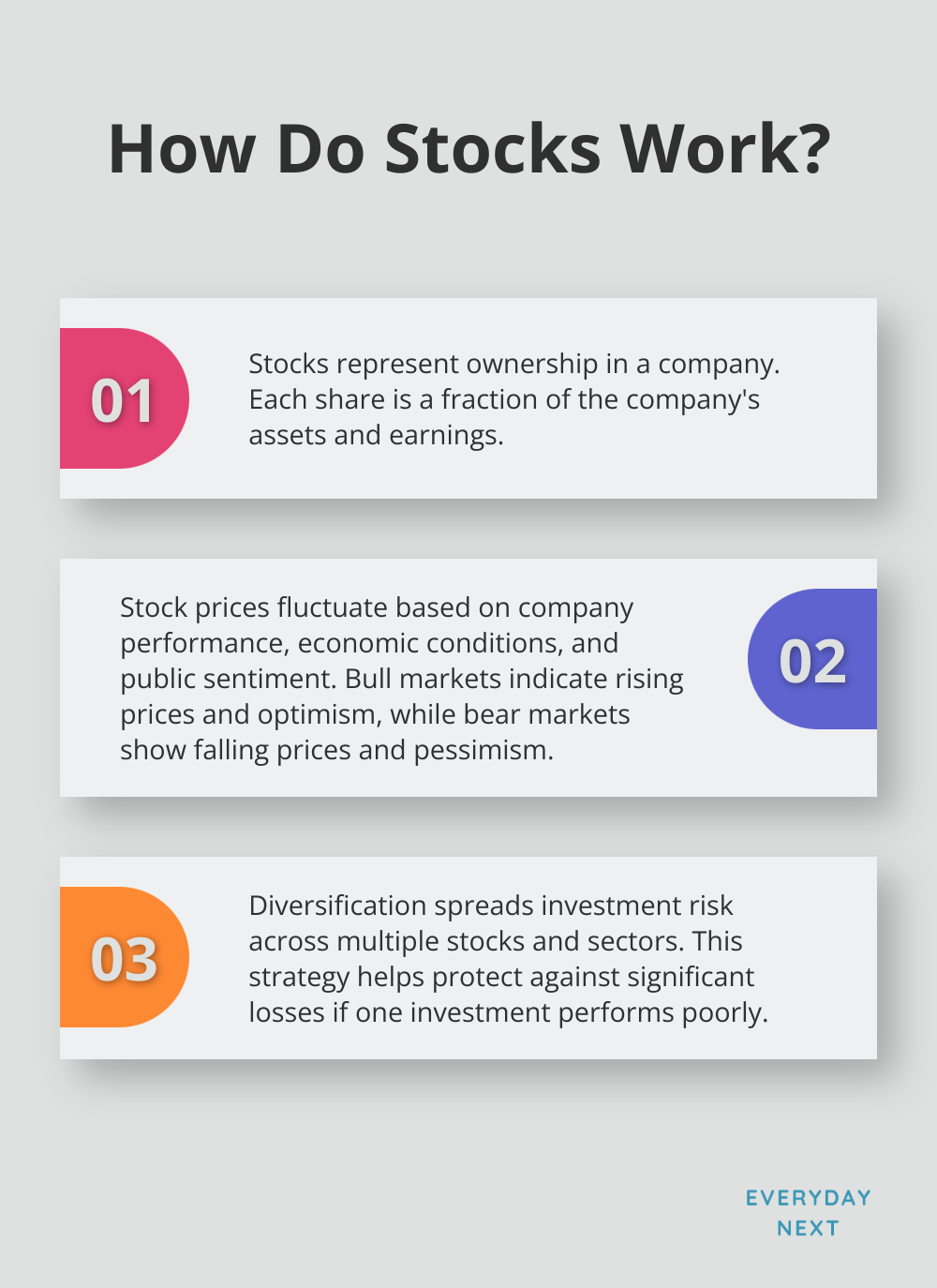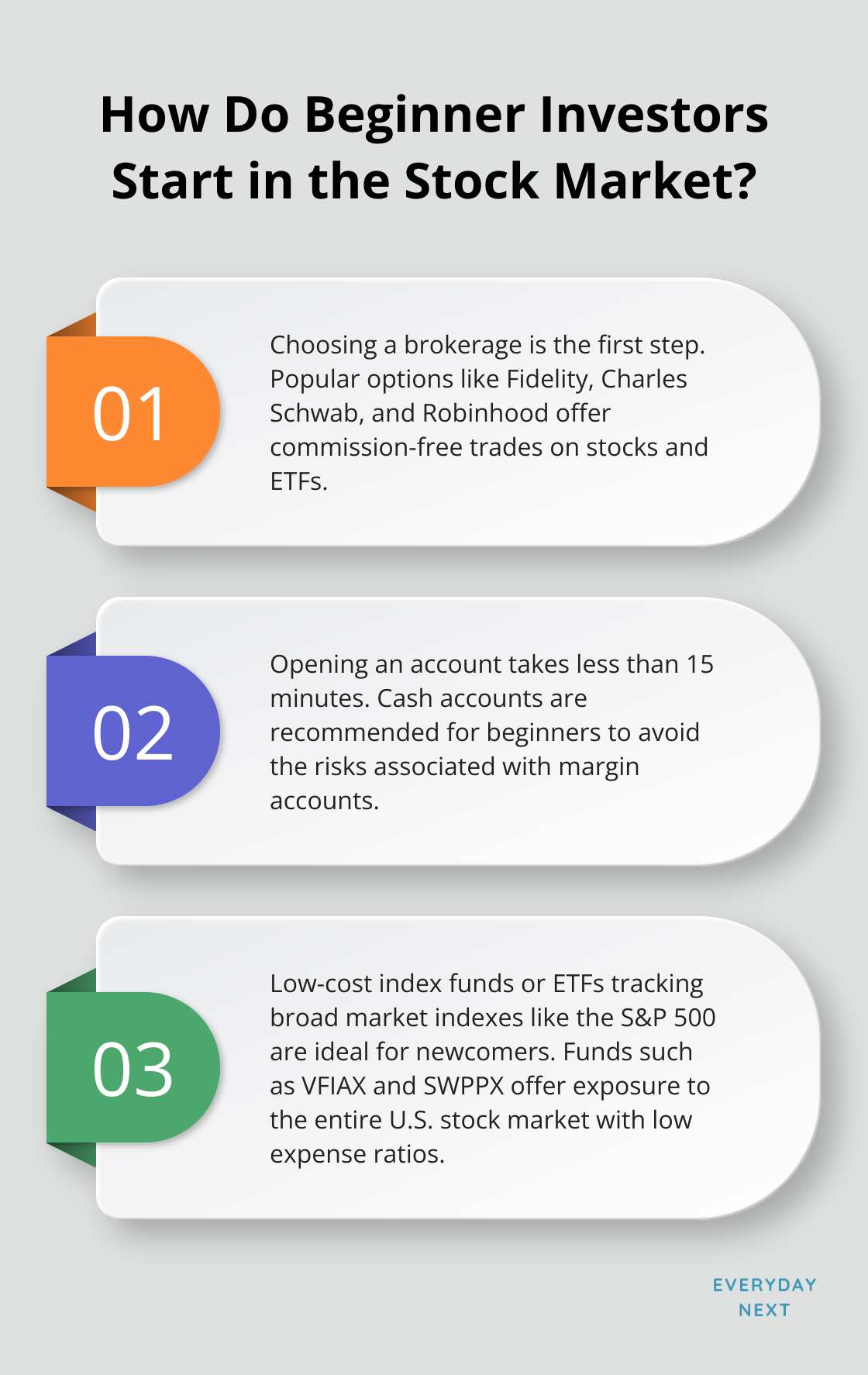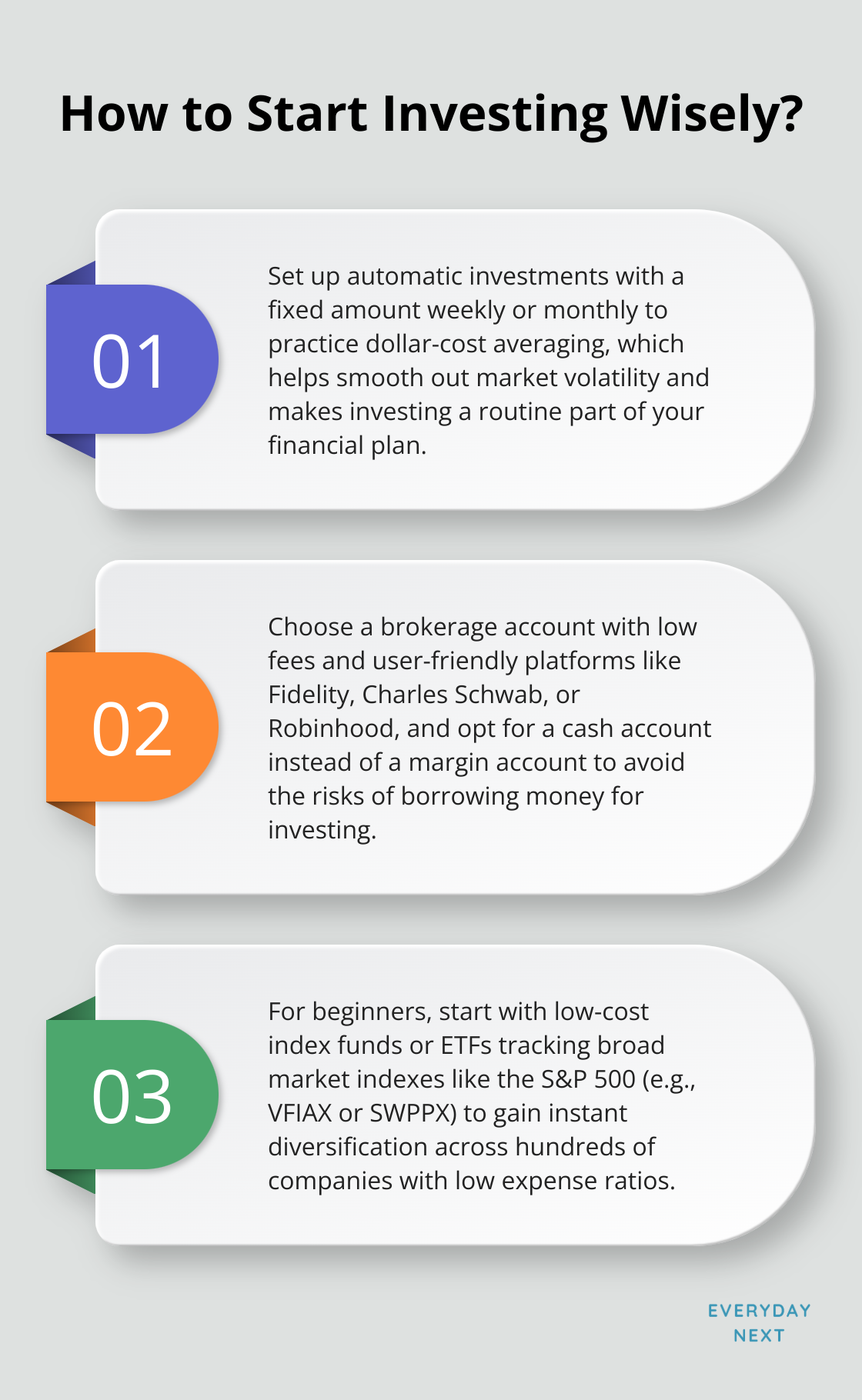
How to Start Investing in the Stock Market for Beginners
Alright, folks, let’s chat about diving into the stock market. It seems intimidating, right? Well, at Everyday Next, we get it—big time. It’s like looking at a jumble of numbers and thinking, “Whoa, where do I even start?” (Cue mild panic.) But hold up… it doesn’t have to be a maze of confusion.
Here’s the lowdown: attacking the stock market can actually be super straightforward. No need for a financial PhD here. What we’ve got is a guide that cuts through the noise—demystifying the basics, helping you to whip up a solid investment strategy, and nudging you towards making those first few moves. Ready to jump in? Let’s do it.
Stock Market Basics: What You’re Actually Buying
The Essence of Stocks
So you wanna play the stock game, huh? At its core, buying stocks means grabbing a piece of the pie-ownership in a company. Simple, right? Each stock you snag is like owning a slice of a company’s assets and earnings. Got some shares in Apple? Congrats, you own a microscopic chunk of that tech behemoth. As Apple rockets up in value, your little slice perks up in value too.

But – hold your horses – stock prices are a rollercoaster. They’re all over the place thanks to stuff like how the company performs, what the economy’s doing, and even just vibes from the public. So yeah, know what you’re diving into.
Essential Stock Market Lingo
Time to decode the gibberish. Here’s your cheat sheet:
- Bull Market: Stock prices are charging upward, and optimism’s the name of the game.
- Bear Market: The flip side – prices drop, and everyone’s got their sad face on.
- Dividend: Your share of the loot – a slice of the company’s earnings just for you.
- P/E Ratio: Price-to-Earnings ratio, your peek into a stock’s worth.
Get cozy with these terms, and you’re prepped to wade through financial chatter without breaking a sweat.
The Power of Diversification
Putting all your chips on one stock? That’s a wild ride – like emptying your wallet on one racehorse. Sure, you might strike it rich, but more likely, you get zip.
Enter diversification. Spread your bets across stocks, sectors, even different asset types. It’s like insurance – if one bet plummets, your whole game doesn’t crash with it.
Savvy investors swear by this approach. It ain’t about hitting grand slams every time; it’s about rounding the bases consistently.
The Long Game
This ain’t a sprint to instant riches – the stock market’s more like a marathon for building wealth over time. Start small, get your learn on, and keep the questions coming. (Your future self will high-five you for diving into investing now.)
Now that you’ve demystified stocks and how they dance, let’s talk strategy. The next move turns this know-how into action, setting you on the path to investment mastery.
How to Create a Winning Investment Strategy
Define Your Financial Objectives
What’s your endgame in this investment arena? A cozy new house…college funds for the little ones…or perhaps, living out retirement on a yacht? Each one needs its own game plan. For the short haul (think less than 5 years), you want those safe, easily accessible investments. But if you’re in it for the long ride, a bit of risk might bring bigger rewards.
61% of Americans are playing the stock game, thanks to a Gallup poll. Don’t be the 39% who sit on the sidelines. Nail down those financial ambitions, with numbers and deadlines. Clarity is your compass for investment choices.
Assess Your Risk Appetite
How much market drama are you okay with? Your risk threshold sets the table for your investment choices. Age plays a role-young bucks often take on more risk. But it’s not just about age…it’s how you sleep at night with your choices.

Here’s a quick trick: subtract your age from 110. That’s how much of your stash should sit in stocks. So, if you’re rocking 30, aim for 80% in stocks and 20% chilling in bonds.
Choose Your Investment Vehicles
Plunge into individual stocks or cozy up with index funds? Both have their charm. Picking stocks is like betting on horses-thrilling but dicey. Index funds offer a ready-made assortment and outshine 80% of active funds, according to the folks at S&P Dow Jones Indices.
For beginners, low-cost index funds are the starter pack. It’s like snagging a piece of the market pie. Once you find your footing, dive into individual stocks.
Implement Dollar-Cost Averaging
Forget trying to nail down the perfect timing for market moves. Just keep funneling money in regularly, rain or shine. This tactic, called dollar-cost averaging, helps you ride out the market’s mood swings.
Imagine dropping $500 into an S&P 500 index fund every month. Some months you’re buying fewer shares when prices spike; other months you’re scoring more when they dip. This game plan can lower your average price over time.
Vanguard’s study showed that lump-sum investments triumphed over dollar-cost averaging two-thirds of the time. But let’s face it, steady investing can feel more doable and keep your nerves steady.
Building an investment game plan isn’t a one-and-done deal. Keep tweaking it as your life and goals evolve. With a solid strategy, you’re ready for the next move: making that plan work in the real world. Let’s dive into turning strategy into action.
How to Start Investing in the Stock Market Today
Choose a Brokerage Account
Alright, first thing’s first – you need a brokerage account. It’s like your ticket to the big dance where you buy and sell stocks. Look for brokers with low fees and user-friendly platforms. Oh, and some educational resources wouldn’t hurt either. Consider this: Fidelity, Charles Schwab, Robinhood, M1 Finance, JP Morgan, SoFi, and Vanguard – they shine bright among brokerage stars for new investors. Why? They let you make commission-free trades on stocks and ETFs, which means more of your cash goes into investments… not fees (because fees are a pain, am I right?).

Opening an account? A breeze – less than 15 minutes usually. Have your personal info ready, and link up that bank account of yours. Pro tip: opt for a cash account over a margin one to sidestep the chaos of borrowing money for investing. Margin is risky business.
Select Your Initial Investments
Here’s where it gets fun – picking your stuff. For rookies, low-cost index funds or ETFs are the way to go. Check this out: ETFs like those tracking broad market indexes such as the S&P 500… they dish out instant diversification across hundreds of big-name companies. Sounds good, right?
Funds like VFIAX and SWPPX? They give you exposure to the entire U.S. stock market with low expense ratios, so your wallet stays happy. Thinking individual stocks? Start with blue-chip companies you actually get. Be sure to look at their financials, competitive advantage, and growth potential. Remember – even the pros don’t always beat the market, so keep individual stocks to a small slice of the pie.
Make Your First Trade
Now, action time. Got your account ready and investments in mind? Go ahead and pull the trigger on your first trade. Most brokers provide simple order forms – you just pop in the stock or fund symbol and how much you want to get involved with.
Keep it bite-sized. Nothing wrong with starting with $100 or $200. Lots of brokers offer fractional shares these days, meaning you can snag a slice of pricey stocks like Amazon or Google. Neat, huh?
For your first trade, use a market order (makes sure it goes through ASAP at current price). Once you’re comfy with the process, play around with limit orders to pick up stocks at certain price points. Strategy, baby.
Set Up Automatic Investments
Investing regularly – way better than trying to predict market hiccups. Set up automatic investments to steadily build your portfolio. This method (fancy name: dollar-cost averaging) helps smooth out the bumps of market volatility.
Commit to investing a fixed amount on the reg (weekly, bi-weekly, or monthly). Consistency takes the emotion out of the equation and lets you benefit from market ups and downs. Dollar-cost averaging makes investing a routine part of your financial game plan.
With the stock market historically returning about 10% annually, your future self will give you a big high-five for getting started today. Keep your learning cap on, exercise patience, and watch your wealth take flight over time.
Final Thoughts
So, here you are – dipping those shiny new toes into the wild waters of the stock market. Feels daunting, right? But hey, with a game plan and a sprinkle of know-how, you’re set up for some serious financial gains. The secret sauce? Master the basics, craft a diversified portfolio, and stick to your guns.

As you gain your sea legs, keep feeding that brain of yours. Tune into financial news, jump into webinars, and keep an eye on those market twists and turns. Little by little, broaden your portfolio horizons – mix things up with different sectors and asset classes, and make a habit of revisiting your investment game plan.
Here at Everyday Next, we’re your trusty sidekick on this money-making journey. We’ve got a treasure trove of resources to help you steer through the investing maze and nail personal finance. Dive into our comprehensive guides and articles to crank up your investment smarts and confidence (setting you up for a future that’s financially radiant).













